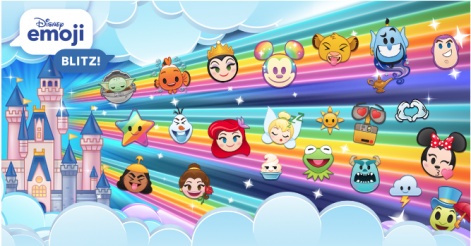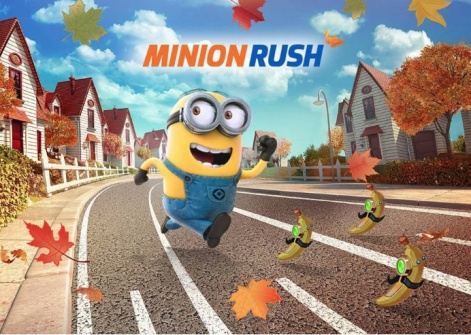With the impact of privacy initiatives like IDFA and ATT being felt across the games industry, many studios are on the lookout for the right IP to get a leg up on the competition and attract new users. When considering what type of IP to work with, IP that’s specifically aimed at children needs to be part of the conversation. Kids’ IP might feel more difficult to find an appropriate setting for and the end product may appear harder to monetize, but they can be a huge asset to your game when used in the right way.
Kids’ IP allows studios to tap into readymade fanbases, potentially on a global scale. Given that they’re often franchises which keep churning out new content and growing their audiences every year, kids’ IP can be hugely valuable to games companies because parents will trust the IP of recognised cartoons and toy brands. On mobile, in particular, licensing kids’ IP into your game can be a massive asset when it comes to marketing and user acquisition. According to Newzoo, high-spenders on mobile games are almost three times more likely to download a game if it’s based on an IP that they like.
Working with well-known IPs certainly isn’t a cheat code to success, but when used in a way that brings the game something fresh, can be a great asset to help boost in-game economies and attract and retain players. Here, we’ll take a look at some of the most popular kids' IPs, how they were brought into games and what made the collaborations so successful.
Disney Emoji Blitz
Originally released in 2016 by Disney Mobile, and then acquired by Jam City in 2019, this Match 3 mobile game is one of the most successful games based on kids’ entertainment IP. The game sees players solve puzzles by matching three or more Disney emojis to clear the screen. The game's goal is to advance through levels and collect popular emojis, each with different abilities that affect the game in many ways.
According to Sensor Tower, it grossed more than $135 million (not including ad revenue), amassed more than 40 million downloads and has an average rating of 4.6 on both Apple and Google Play stores. This classic IP helped enormously with user acquisition, too. The game was downloaded over 1.6 million times in the first month.
There’s no shortage of recognisable Disney characters and integrating all of them is a really clever way to target fans right across the Disney portfolio (exactly as Warner Bros has just done with its multiplayer brawler Multiversus). With literally hundreds of characters to collect, the IP itself creates an addictive loop to keep players returning.

Emoji Blitz isn’t strictly a kids IP or a kids' game, but as a Disney IP it is always going to have that appeal to younger gamers. It’s also why this is a great example of how this type of IP can help creators connect with multiple audiences with a nostalgia factor boosting its appeal.
Minecraft: Sonic the Hedgehog, Toy Story, Ice Age, Pirates of the Caribbean
Adding licensed IP to a game doesn’t have to mean creating something entirely new.
One of the most impactful and organic ways of leveraging licensed IP can be integrating it into an existing game as character skins, collectable items, maps, etc. These can also be far simpler and quicker to execute. Developers need to be careful that integrations fit into the game’s style and narrative, but if done correctly, they can be a useful retention and monetisation tool.
Minecraft’s IP-themed DLCs are perhaps the best example of kids' entertainment IP. Over several years, Minecraft developers have released many brand-themed DLCs, including ones based on Sonic the Hedgehog, Toy Story and Ice Age. Each DLC has amassed tens of thousands of positive reviews, a good indicator that they are beloved by players.

The way these brands are integrated into the Minecraft experience is key to their success. Exploring the world at your own pace is a big part of Minecraft’s draw. So is creating and customising your own identity, and your world, in a way which makes sense to you.For example, Toy Story DLC allows players to explore familiar locations from the famous franchise and is scaled down to the perspective of a toy. While each DLC allows for free exploration of beloved worlds familiar to the game’s core users, they also contain challenges for ongoing engagement.
The Sonic DLC gives players materials to construct their own Sonic arena and an online multiplayer mode where players can race each other. Every arena could be different depending on the player’s personality.
Of course, we can’t put Minecraft’s astonishing success down to a handful of shrewd IP deals. But Minecraft’s collaborations show just how much of an impact branded DLC can make on a game’s longevity, keeping it fresh, relevant and increasing replayability.
Minion Rush
Another highly successful example of a mobile game using kid’s IP is Gameloft’s Minion Rush released in 2013. One could be forgiven for thinking it would be difficult to find a game concept that fits the Minions, but Gameloft found the perfect, silly way: an endless runner. It’s a super simple game where players assume the role of the minion Dave, who wants to win the “Employee of the Year” award.

One of the key reasons this game works is that Gameloft carefully selected a genre and concept that works. Minion Rush doesn’t try to do too much. Like other games, the mechanic is simple which makes it easy for any skill level to engage with. But it’s not just a bunch of Minions sliding around: it adds depth and stands out from other runners by integrating different locations from the Despicable Me series, which serve as backdrops to each level. It also provides players with the ability to collect different Minion costumes as they advance through levels.
Two other factors also make this game successful: its timeliness and the franchise’s longevity. Minion Rush rode the wave of Despicable Me 2’s popularity - also released in 2013 - attracting almost over 100 million downloads in the first three months.
The game has been enormously successful for Gameloft, amassing over 1 billion downloads and a 4.6 average rating. According to Gameloft Kharkiv general manager Stanislav Sadkeyev, the Minions brand has been so helpful in user acquisition that there is barely any paid user acquisition for the game. That is a staggering effort for a game with so many downloads. It’s also a testament to the power of licensed IP in games - that it’s a powerful tool for solving perhaps the hardest problem for creators - attracting users to your game.
Part of what makes these collaborations so successful, is the organic integration of IP that both stays true to the brand, and works within a genre and setting that intuitively makes sense. They also all into the category of “easy to learn, difficult to master”, meaning they’re accessible to any player of any age and any skill level. It’s important that a game’s feature set and mechanics need to align with the IP you’re working with.
How to choose the right IP for your game
Emulating the success of these winning collaborations is never a simple recipe, there’s a lot you need to consider before you hit the ground running.
- Getting a thorough understanding of your target IP’s audience and demographic needs to be front of mind. It will help determine whether a partnership is the right fit for your existing players. The best examples don’t feel forced - they just make sense.
- Think carefully about what kind of content you want to bring in, as there are hundreds of ways to collaborate. Simpler in-game items, like cosmetics and skins, are often much easier to negotiate with rights holders due to less complicated terms and in most cases, lighter development and creative costs can make them much quicker to approve, too.
- Finally, be realistic about your target IP. Most IP rights holders – and especially agencies handling IP rights – will have a “get out of bed number” that they want to hit as quickly as possible to cover their internal admin and legal costs. Going straight for the Disney’s of the world may sound like a good idea, but as such partnerships are never cheap, it pays to ensure the ROI will be worth it in the long run.





















